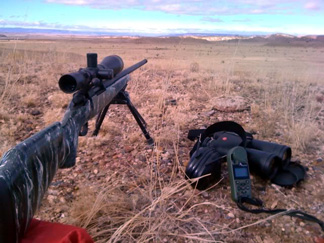

 The Accurate Reloading Forums
The Accurate Reloading Forums  THE ACCURATE RELOADING.COM FORUMS
THE ACCURATE RELOADING.COM FORUMS  Rifles
Rifles  Long Range Shooting
Long Range Shooting  Holding over Vs Dialing
Holding over Vs DialingGo  | New  | Find  | Notify  | Tools  | Reply  |  |
| One of Us |
Yes, the instructions by Leupold are close. You are supposed to -0- the rifle at 200 or 300 yards depending on cartridge catagory. 200 for standard velocity and 300 for high velocity. You are then supposed to shoot a group at the longest range for the last reticle subtension. 500 for the standard and 600 for the high velocity. You shoot this group on a very long vertical target board with the aim point at the top of the target. Using the sight in -0- at the center intersection of the crosshair, aim at the dot and shoot a group. The group will naturally be way low on the target. Your target must be tall enough to "catch" those shots at 500 or 600 yards. You then mark the center of your group well enough to see from back at the bench. Now you have a high marked aimpoint on the target and a low marked group. Back at the bench with a solid rest, aim the -0- again at the original aimpoint and ajust the power ring till the group you just marked is aligned with the corresponding longest range subtension. It's close, but depending on the bullet you're shooting and the velocity, the other aimpoints will be off and you'll have to shoot and check, shoot and check. I've found it much simpler to -0- at 200 then match the next aimpoint down in MOA to my printed data and write it on a mock reticle taped to the scope. Set the scope on the correct power to make the subtension distances correct in MOA and go from there. I -0- at 200 even with the high velocity cartridges because most game is shot from 100 to 300 yards. I have shot over stuff with a 300 yard -0- It may look like this with the high velocity cartridge: -0- = 200 "300 yard aimpoint" = 250 "400 yard aimpoint" = 330 "500 yard aimpoint" = 440 I make a drawing of the reticle on wide masking tape and put it on the objective bell of the scope for quick reference. On the stock I have a data card taped on and taped over with clear packing tape to protect it. It shows drop and windage in MOA for dialing. | |||
|
| one of us |
| |||
|
| one of us |
We have some rather "nervous" Deer where the majority of my Hunting has taken place. Lots and lots of their friends have had rides in the back of pick-up trucks. | |||
|
| one of us |
I use a mildot scope and hold over - I never dial in. I put a piece of masking tape on the scope which shows my notes for that scope/rifle combination like a chart. It lists the dot count for a deer's chest height with the yardage and the trajectory.
Nope: Did I move the adjustment to 350 or 400 last - Did I click down 6 or 8 last time - Was that 350 to 450 - No 400 - Whats that click to get back to 400 - It don't work - Where did I leave it from last hunt - Thought I returned it to 400? ________ Ray | |||
|
| One of Us |
What kind of scopes do you have? If you have Leupolds, it's quite simple not to get confused. The turrets are clearly marked and set screws loosen to -0- the knob at your chosen sight in range. Kinda tough not to be able to tell where it's set unless you need a new prescription A full turn is 15 MOA and will get me out to over 760 yards with my standard calibers. If you ever make more than a full turn, you'll remember if you are hunting, but it would be a rare occasion IMO. You can get -0- stops as well. Ginko may help | |||
|
| One of Us |
 . .  You can put this cool data "card" on it too...   | |||
|
| one of us |
For me, and the kind of hunting i do that's not fast enough--i've tried it and i can't reach up. dial dope while getting slightly out of position, then come back down to the sight picture to reacquire the tgt., and get back into position to find out the coyote has moved again--now start all over... Here's my system that's placed into a BC ocular cover, so it's there at a glance, and can be referenced and rereferenced AT A GLANCE UP ONLY, never having to get out of position-- 435-yd. coyote 1st kill with this rig using a 6.5 WSM XP-100/140 A-Max/6.5-20x Holland HUMR reticle-- 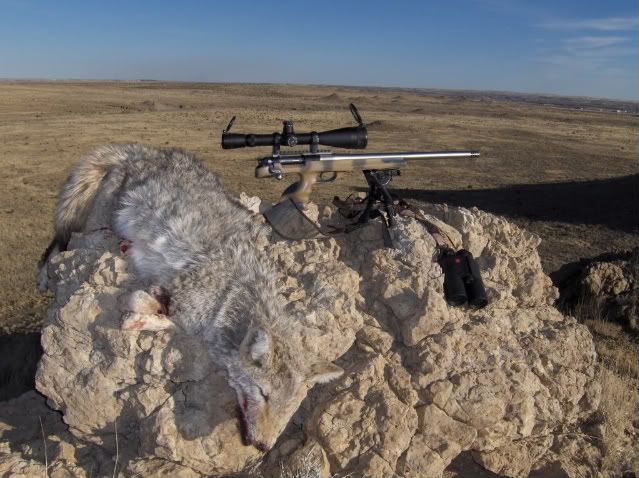 Coyote is laying at the 1.5 mil mark-- 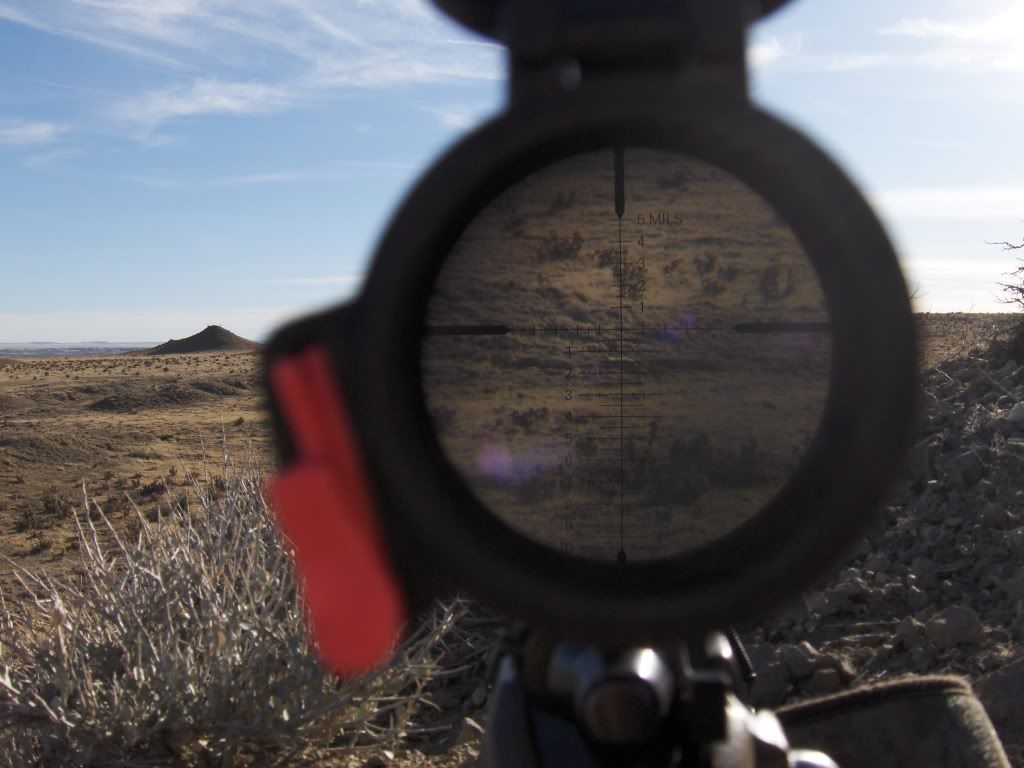 Range-vertical-horizontal always no headers needed--the fastest system i could possibly think of--  Retice-rangefinding in the BC Blizzard-style cover if needed (additional dope could also go here)--referenced at a glance without having to move at all-- 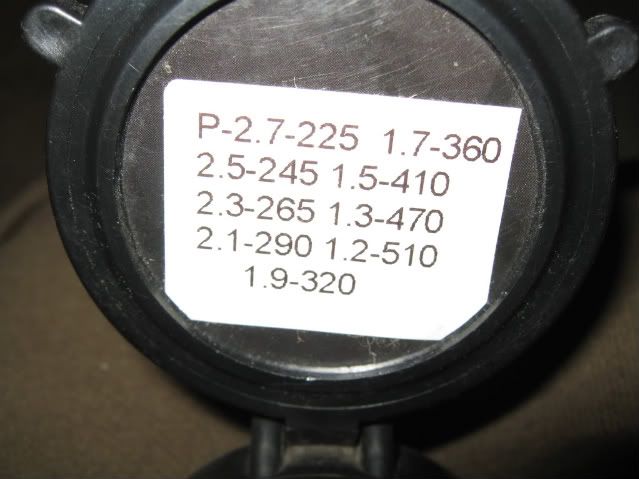 That's my system and i'm stickin' to it-because experience has taught me that it works. Steve | |||
|
| One of Us |
Sscoyote, your system works because your reticle is set up in Mils. The "ballistic" reticles set up in yards have general aimpoints. Holding over with a mil or MOA reticle with confirmed data is the same as dialing except holding off for wind in outer space which sucks | |||
|
| one of us |
Don't ballistic reticles stadia points have subtension values too at various magnifications? I sure hope so cause when i adapted the 3-9x PFI 22 Long Rifle Rapid Reticle optic for the trajectory of my AR 223 AI shooting the 65 JLK Low Drag at 3050 mv under std. winter conditions in my area of operation for coyotes at long range wasn't correct. All my other specialty pistols that shoot VLD bullets using ballistic-style reticles don't work either. Steve | |||
|
| One of Us |
Yes but where the problem lies is what I have described in my previous posts. On our scopes set up in mil or MOA and with a FF plane reticle, a mil is a mil is a mil no matter the power setting. On the second focal plane scopes like my Leupold with the VH reticle, the power must be set perfectly for the stated subtensions to be correct and even then the graduations are uneven. On the VH reticle on the big triangle setting, from the center to the first aimpoint is 1.8 MOA, 4.3 to the second, 7.1 to the next and so on. I look at my drop data and from my -0- check the MOA drop that is 1.8 MOA and write the yardage on the "map" and so on down the line. | |||
|
| one of us |
Exactly--my VH reticle and several FFP mil. reticles have the same subtension measurements as yours do. So how are the mrad reticles that aren't in the FFP that i'm using different than a unit of subtension that doesn't repeat itself in either FFP or SFP--and what effect does it have on accuracy of downrange zeroing and reticle-rangefinding, besides the fact that i have to have them on the correct SFP power to apply correctly? In other words if my 525 yd. shot requires 5.7 MOA drop and i'm using my VH reticle, and need to aim 2.5 subtension units down (7.1-4.3=2.8, 5.7 is 1.4 beyond the 2nd stadia's subtension, 1.4/2.8=0.5....zero=2.5), how is a mil reticle applied differently with more accuracy since the subtension itself is larger? Steve | |||
|
| one of us |
Hey R, You need to re-read the Link to using Mil-Dot Reticles. They can be thought of in Inches as well as they can Mils. ----- Someone a long time ago mentioned having a "Special Reticle" they bought which was supposedly set-up for a specific Load in that Cartridge - by the Factory. That same person said something about "...not being able to change the Load, because the new Load would not match the Reticle." If they had shot it, they would have seen the old Load didn't either. ----- Some folks get hung up thinking all the Aiming Points must be in exact multiples of 100yds. ----- There is room in Shooting and Hunting for both Methods. Each method works the best under certain conditions. | |||
|
| one of us |
Yes. Here's the dope for my 243 WSSM Savage Striker/8 twist/115 DTAC @ 2550 mv. and Leupold Varmint Hunter reticle (4.5-14x). Doesn't even come close to even hundred yd. intervals. Look at the 10 mph windage--~1/2 the subtension as designed @ 14x-- 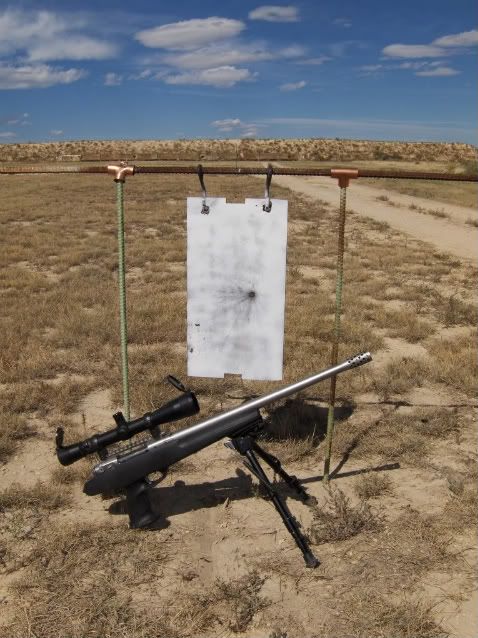 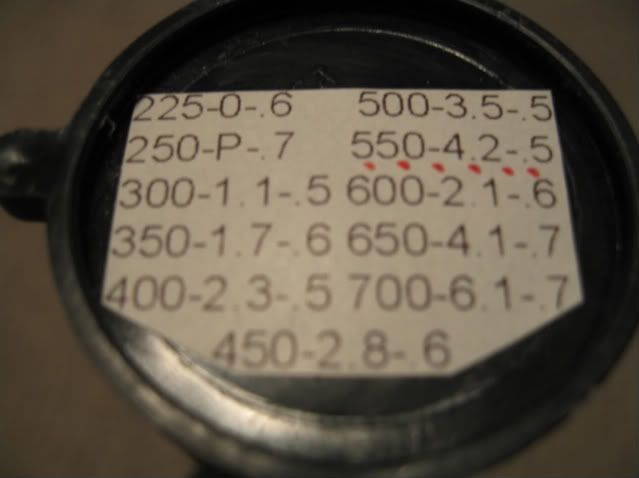 Killed a couple of coyotes beyond 500 yds. with this rig--1 in a FV 10 mph 3 o'clock wind @ 535 and had to aim right here according to calcs-- 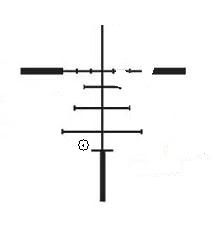 Steve | |||
|
| one of us |
I've never really cared for the VH reticle system in the 6.5-20x or 8.5-25 since the subtensions aren't available for the optic's highest powers in those 2 models--you have to measure them--but it can be measured very accurately. When it comes to mil-dot reticles, mil-ranging, and the mil-ranging formula the most important things to remember are that-- 1) The mil-ranging formula is not specific to the milliradian subtension, and can be used with any multi-stadia reticle subtension from simple plex to Ballistic Plex to archery sight pins if one desires to. 2) Reticle subtension is ~inversely proportional to magnification 3) The mil-ranging formula actually defines rangefinding and downrange zeroing with any reticle or turret system. These concepts are way bigger than just mil-ranging with a mil-dot reticle only though rarely talked about or investigated. Steve | |||
|
| one of us |
Dialing is going to be more accurate then hold over. I would and have used hold over out to 600 yards max but I like dialing better. There are other factors that come into play that can make it real tough when holding over. I will give you an example. Where I live the elevation is 865ft where I elk hunt it can be anywhere from 8000 to 11000 ft. At 500 yards with my 7mm mag at 10,000 feet I have to take 3/4 MOA off my dope that I use at home at 865 feet or I shoot high. Now that is at 500 yards and I have to take more off the father I go. That would make holding over with whatever reticle real tough and not accurate enough in my book. If you practice it enough you can dial very quickly and you will be more accurate. | |||
|
| Powered by Social Strata | Page 1 2 3 4 5 6 |
| Please Wait. Your request is being processed... |
|
 The Accurate Reloading Forums
The Accurate Reloading Forums  THE ACCURATE RELOADING.COM FORUMS
THE ACCURATE RELOADING.COM FORUMS  Rifles
Rifles  Long Range Shooting
Long Range Shooting  Holding over Vs Dialing
Holding over Vs Dialing

Visit our on-line store for AR Memorabilia

